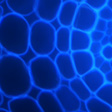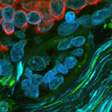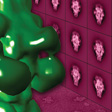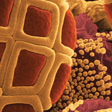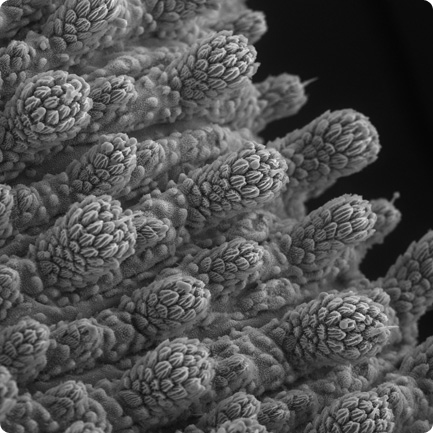 The skin surface of a velvet worm. You can see why it feels velvety. Its naturally water-repellent structure can provide inspiration to scientists making new stay-dry materials. This velvet worm was found under a rotting log near Thredbo.
The skin surface of a velvet worm. You can see why it feels velvety. Its naturally water-repellent structure can provide inspiration to scientists making new stay-dry materials. This velvet worm was found under a rotting log near Thredbo.
Visualised using scanning electron microscopy by Jenny Norman, University of New South Wales.
Size: each 'finger' is about 45 micrometres wide.
The structure of the 'fingers' or papillae visible through the microscope, covering the thin, flexible skin of velvet worms can help precisely identify the species. This Planipapillus mundus is one of the egg-laying species found only in Australia and New Zealand.











